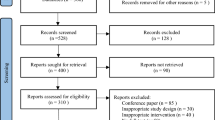Abstract
Eye movement plays an important role in face to face communication in that it conveys nonverbal information and emotional intent beyond speech. Being “a window to the mind”, the eye and its behavior are tightly coupled with human cognitive processes. In this paper, we proposed an Emotional Eye Movement Markup Language (EEMML) which is an emotional eye movement animation scripting tool that enables authors to describe and generate emotional eye movement in virtual agents. The language can describe eye movement parameters we derived from facial expression database as well as real-time eye movement data (pupil size, blink rate and saccade). EEMML provides the input for our eye movement generator system with one or more eye movement actions in sequence. The language is extensible, so that new rules can be quickly added. It is designed to plug into larger human-agent or agent-agent interaction systems. We present an evaluation in which subjects evaluated the EEMML and gave their feedback. The results indicate the validity of our approach.










Similar content being viewed by others
References
Balci K (2004) Xface: Mpeg-4 based open source toolkit for 3d facial animation. In: Proceeding of the working conference on advanced visual interfaces, pp 399–402
Beard S (2002) Design decisions underlying virtual conversational character scripting languages. In: Proceedings HF-02 workshop on virtual conversational characters: applications, methods, and research challenges
Bradley M, Lang P (1999) International affective digitized sounds (iads): stimuli, instruction manual and affective ratings (tech. rep. no. b-2). Gainesville, FL: The Center for Research in Psychophysiology, University of Florida. Technical Report
Cassell J, Vilhjalmsson H, Bickmore T (2001) Beat: the behavior expression animation toolkit. In: Proceeding of SIGGRAPH01, pp 477–486
Cohn J, Zlochower A, Lien J, Kanade T (1999) Automated face analysis by feature point tracking has high concurrent validity with manual facs coding. Psychophysiology 36:35–43
Damasio A (1994) Descartes’ error, emotion reason and the human brain. Putnam, Crosset
Faigin G (1990) The artist’s complete guide to facial expression. Watson-Guptill Publications
Gu E, Badler N (2007) Visual attention and eye gaze during multiparty conversations with distractions. In: Proceeding of international conference on intelligent virtual agents, pp 193–204. doi:10.1007/11821830
Just M, Carpenter P (1976) Eye fixations and cognitive processes. Cogn Psychol 8:441–480
Kopp S, Krenn B, Marsell S (2006) Towards a common framework for multimodal generation: the behavior markup language. In: Proceeding of IVA2006
Lance B, Marsella S (2007) Emotionally expressive head and body movements during gaze shifts. In: Proceeding of international conference on intelligent virtual agents, pp 72–85. doi:10.1007/978–3–540–74997
Lance B, Marsella S (2008) A model of gaze for the purpose of emotional expression in virtual embodied agents. In: Proceeding of autonomous agents and multi-agent systems.
Lang P, Bradley M, Cuthbert B (1997) International affective picture system (iaps): affective ratings of pictures and instruction manual. technical report a-8. University of florida, Gainesville, FL. Technical Report
Li Z, Mao X, Liu L (2009) Providing expressive eye movement to virtual agents. In: Proceeding of ICMI-MLMI2009, pp 241–244
Mao X, Li Z, Bao H (2008) Extension of mpml with emotion recognition functions. In: Proceeding of IVA2008, pp 289–295
Mao X, Li Z (2010) Web-based affective human-agent interaction generation. In: Hartung R (Ed) Agent and multi-agent system technology for internet and enterprise systems. Springer-Verlag, Berlin, pp 323–345
Marriott A, Stallo J (2002) Vhml—uncertainties and problems, a discussion. In: Proceeding of AAMAS’02 workshop on ECA-Let’s specify and evaluate them. Italy
MPEG4 (2005) Moving pictures expert group, information technology—coding of audio-visual objects, iso/iec 14496. Technical Report
Ortony A, Clore G, Collins A (1988) The cognitive structure of emotions. Cambridge University Press
Picard R (1997) Affective computing. The MIT Press
Plutchik R (1980) Emotion: a psychoevolutionary synthesis. Harper and Row
Prendinger H, Ishizuka M (2006) Describing and generating multimodal contents featuring affective lifelike agents with mpml. New Generating Computing 24(2):97–128
Raouzaiou ATNKK, Kollias S (2002) Parameterized facial expression synthesis based on mpeg-4. EURASIP Journal on Applied Signal Processing 10:1021–1038
SMIL: The SMIL 2.0 Timing and Synchronization Module. http://www.w3.org/TR/2005/REC-SMIL2-20050107/smil-timing.html. Accessed 7 Jan 2005
Stamper R (1996) Signs, norms, and information systems. In: Holmqvist B et al (eds) Signs at work. Walter de Gruyter, Berlin
Ullrich S, Bruegmann K, Prendinger H, Ishizuka M (2008) Extending mpml3d to second life. In: Proceeding of IVA2008, pp 281–288
Whissel C (1989) The dictionary of affect in language. In Emotion: theory, research and experience. Academic Press
Acknowledgements
This work is supported by the National Nature Science Foundation of China (No.60873269), International Science and Technology Cooperation Program of China (No.2010DFA11990) and Innovation Foundation of BUAA for PhD Graduates.
Author information
Authors and Affiliations
Corresponding author
Rights and permissions
About this article
Cite this article
Li, Z., Mao, X. EEMML: the emotional eye movement animation toolkit. Multimed Tools Appl 60, 181–201 (2012). https://doi.org/10.1007/s11042-011-0816-z
Published:
Issue Date:
DOI: https://doi.org/10.1007/s11042-011-0816-z




